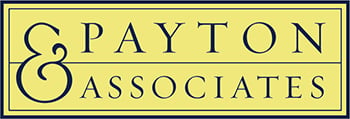The operative facts in Bartram are simple.1 Borrower executed a standard form mortgage in favor of the lender. The mortgage contained an optional acceleration clause and provided the borrower with a right to reinstate the mortgage after acceleration. The borrower defaulted. The lender notified the borrower of the default. The lender exercised its option to accelerate payments and commenced a foreclosure action. One day short of five years later, the foreclosure action was dismissed involuntarily against the lender pursuant to Florida Rule of Civil Procedure 1.420 (b).
Approximately one year later, the borrower filed a cross-claim against the lender in a separate foreclosure action begun by his prior wife against him, the lender and the homeowners’ association. The borrower’s cross-claim sought a declaratory judgment to cancel the mortgage and quiet title to the residence, asserting the five-year statute of limitations barred the lender from accelerating and bringing another foreclosure action because the lender did not revoke its prior acceleration any time before the action was dismissed.
The question presented to the Supreme Court of Florida was whether the statute of limitations is triggered by the prior involuntary dismissal of the lender’s foreclosure action when the subsequent foreclosure is based upon defaults occurring subsequent to the initial foreclosure. The Supreme Court held that the statute of limitations is not triggered by the prior action and the lender is not barred from timely pursuing the subsequent defaults.
The court held a default occurring after a failed foreclosure attempt creates a new cause of action for statute of limitations purposes. Each new default begins the running of the statute of limitations from the date of default and provides the lender with the right, but not the obligation, to accelerate all sums then due under the note and mortgage. Moreover, it does not matter whether the first foreclosure was dismissed on the merits.
In deciding Bartram, the court concluded that under the conventional Florida form of mortgage allowing the borrower to reinstate after default, upon compliance with a number of conditions, the lender and the borrower are returned to the same position they were in prior to the involuntary dismissal of the first foreclosure action. In Bartram, the borrower argued the lender lost its right to accelerate payments for subsequent defaults after the initial foreclosure action. The court held it made no difference whether the dismissal of the prior foreclosure action was with or without prejudice. The borrower’s right to continue payments on the note and the lender’s right to seek acceleration and foreclosure based upon subsequent defaults were reinstated. The court held upon dismissal of the first action, the lender’s optional right of acceleration is revoked.
The Bartram decision is good news for all lenders that, for one reason or another, had their initial foreclosure action dismissed during the Great Recession, as many were. The five year statute of limitations is not a bar to timely actions brought on subsequent defaults.
1No. SC14-1265, Nov. 3, 2016, _ __ So.3d ___ (Fla. 2016).

